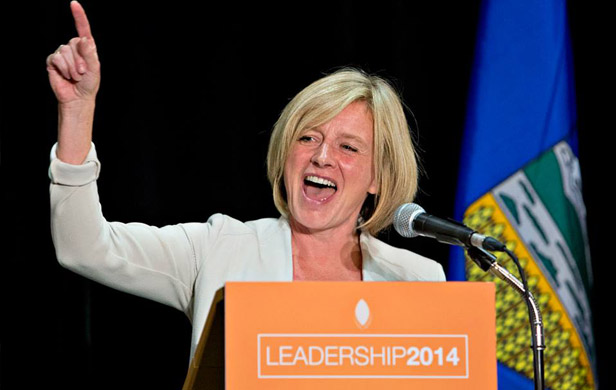Alberta could actually reduce emissions
First, the theoretical wind power production potential of Alberta is equivalent to all the electrical production needs of every province West of Québec.
Second, the potential for wind power to reduce Alberta’s emissions is especially significant in that fossil fuels represent the lion’s share of energy sources consumed for electricity production in the province.
Coal represents 6,258 megawatts (MW), 42% of the electrical power generation sources in the province – and 40% of total electricity use if one takes into account 1,200 MW of imported electricity – out of a total of 15,798 MW produced to meet Alberta’s needs.
Natural gas accounts for 5,812 MW or 40% of the electricity produced in the province and 37% of the total provincial consumption of electricity.
US coal consumption waning
In the larger context of global trends, while global wind energy capacity is growing at 20%/year and solar energy at 50%/year over the past 10 to 15 years, US coal consumption has declined 21% between 2007 and 2014. In the last 5 years more than one third of the US coal-fired generating plants have either closed down or have been the object of announcements of closures to come. This trend will accelerate for the purposes of complying with US Environmental Protection Agency requirements to reduce CO2 emissions from the electrical power plant sector by 30% by 2030 over 2005 levels.
China leads the way

And then there is the astounding example of the world’s largest energy and coal consumer, China, which uses more coal than the rest of the world combined. China, which is now by far the world’s largest investor in clean energy technologies – with 1.58 million jobs in its solar energy sector and 356,000 working in its wind sector – saw it’s coal consumption decline in 2014!
Surely, if the world’s largest consumers of coal are reducing their use of this energy source, it may be time for Alberta to get in-step with the world leaders and acquire a more positive international energy profile.
Working with the oil and gas industry
To make the shift to clean electricity happen, the petroleum sector could play an important role.
Specifically, in the event that the new Notley government and energy sector engage in a joint review of fiscal and policy options, a strategy could be developed to facilitate energy diversification among the fossil fuel sectors to become bigger players in the clean energy fields. Indeed, there are already models for doing so.
Also worth noting, Dong Energy, which is 60% owned by the Danish Pension Fund and is the world’s largest investor in offshore wind farms, has a target to shift from 85% fossil investments and 15% in renewable energy, to reversing this ratio by 2040.
Growing green jobs
Equally important, Notley can go beyond home grown clean energy production to include job creation and economic diversification in the province’s energy manufacturing sector.
This could be achieved with the right policy environment for clean energy projects – such as local manufacturing content stipulations in exchange for wind farm contracts and/or financing, as per the Québec and Brazilian models – and possibly including additional incentives for some oil technology firms to become part of a local clean tech supply chain. In short, there may be opportunities for Alberta to manufacture and export clean technologies, as well as produce clean energy for local use.
Brazil becomes green power player
This is not that far outside of the box. A case in point is that of Brazil’s WEG, a new entry into the wind turbine manufacturing sector, thanks to Brazil’s incrementally increasing local content rules for wind power projects, which will reach 60% by January 2016.
These Brazilian domestic content requirements – applied under an auction process that is managed and favourably financed to about 60% to 65% of projects’ value by the country’s business development bank – have given rise to WEG diversifying into the business of developing its own wind turbines. Now, what makes this interesting is WEG is a Brazilian home-grown domestic technology supplier that has traditionally served the oil, gas, industrial and power sectors.
WEG has already started making a first turbine prototype and plans to launch its 3.3 MW model in 2017. Working with local suppliers and testing their components, WEG expects to achieve 80% local content and include technologies specifically designed for Brazil’s tropical and sub-tropical temperatures. WEG relies on its local R & D capacity to turn out designs more in-tune with local environments. The company also plans to export its technologies to Latin America and Africa.
Applying the WEG model to Alberta, suppliers there would design components suited to a colder climate and export their products to northern regions.
A “win-wind” model for Alberta
All of the aforementioned considerations could be among the starting points for Alberta participation in a national strategy on the environment, and a provincial policy on economic and energy diversification, as per Notley’s goals. In the words of the late Jack Layton, “Don’t let them tell you it can’t be done!”



How bout giving every home owner a set of solar panels and some battery’s eventually every home would be producing power into the system.
We, in BC, are on the road to economic suicide but once the NDP gets in, it will turn around, just as it did in the 90’s. In the 90’s, BC had problems because of economic the meltdown in Japan, our major Asian trading partner. Luckily we had astute leaders who started increasing the trade with China. By the time the NDP lost the election to the lying Campbell and the BC Liberals, BC had a billion dollar surplus. We have seen none since.
While I agree with Mr. Dubitsky that the Alberta oil sector is a major polluter and contributor to greenhouse gas emissions.
Everything that he proposes will cost money.
Money the province doesnt have.
The NDP were elected because the supposedly fiscally responsible “Conservative” govts of the previous 40+ years had “blown” the Heritage Fund, the budget, and the voters trust.
So what now?
The NDP have inheirited a deficit budget, drastically reduced oil prices, rising unemployment, a Heritage Fund thats an emaciated vestige of its former self and a populace wanting results.
The Alberta oil industry is a slave to what the Saudis dictate. And the Saudis are currently punishing ALL oil producers worldwide in a vain(and some what fruitless) effort to regain control of world wide oil prices. Ft Mac and Fracking barely break even at $50/bbl. Dont expect a lot of financial help for the NDP govt from Big Oil in Alberta. They have enough problems to worry about.
Other Alberta big business industries unrelated to oil have spent the last 40+ years sucking up to the Conservatives……As simplistically as I can put it…..I dont think there’s gonna be a lot of love shared between the NDP and them.
So the NDP have voters expecting results (because most voters these days have the attention span of a gnat) within the first 6 months…….
Unfortunately , as much as I believe Ms Notley means well…….
If Ontario and BC’s “experiment with the NDP are any indication.
Big business and Big Oil will hunker down and wait out the next 4 years